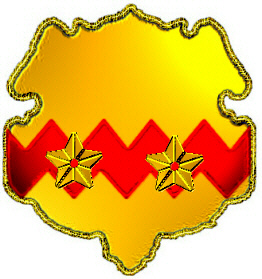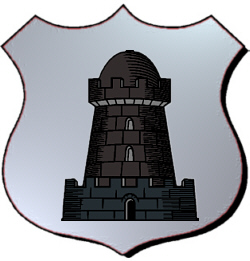Art by Betmatrho in
this Red-Thread Genealogy section for the
'Lost Tribes of Israel'
may
be freely used for personal use.
Coat of Arms: A gold shield with two gold mullets pierced on a red fess dancetty.
Crest: Description not available
German
Spelling variations include: Damann,
Dammann, Daman, Dammann, Damm and others.
First found in Oldenburg, where the name emerged in mediaeval times as one of the notable families of the region.
Click here for the descendants ofEdward b. abt 1704 & Lydia (Newton) Damon of
Reading, Middlesex Co, MA

Coat of Arms: Silver with a black tower.
Crest: Description not available
Italian
Spelling variations include: Damon, Daymon, Damyon, Damond, Daumont, Damont, D'Homan, Damian, Damian, Damino, Damini, Damman and many more. First found in Piedmont, Piemonte, Pedemons, a territorial division of northern Italy at the foot of the Alps consisting of the provinces of Alessandria, Cuneo, Novara and Turin. Some of the first settlers of this name or some of its variants were: Thomas Domini, who settled in America in 1768; Francis Daymon, who came to Pennsylvania in 1777; Daniel Damont, who settled in Philadelphia in 1818; Georg Anton Domino, who arrived in Texas in 1845.

As you know, we've previously researched the name <Damon> and found no evidence that it was used in the Middle Ages. The citations you found in the Lexicon of Greek Personal Names prove that it was used in classical Greece -- that source covers sources from 600 or earlier -- but it isn't safe to assume that it was used in later-period Greece or elsewhere in Europe without evidence.
A quick survey of our conveniently-available sources shows that
Damian was used quite widely in medieval and renaissance Europe, but it does not turn up any example of Damon. If you're interested in learning more about Damian, let us know.
We also came across a modern Sicilian surname Damone, which our source explains as a short form of Adamone, itself a derivative of Adamo i.e. Adam. It cites a 14th century example of Adamonus,
which is probably a Latinization of Adamone. It's possible that the modern form Damone, pronounced dah-MOH-nay was also used as a given name at least in late-period Italy. [Girolamo Caracausi,
_Dizionario Onomastico della Sicilia_ (Palermo, 1994), s.n. Damone] If you'd like us to investigate this possibility, let us know.
Arval
for the Academy
14 Apr 2002
ACADEMY OF SAINT GABRIEL REPORT 2726
http://www.s-gabriel.org/2726
![The Red Thread Coat of Arms sample coat of arms [full]](http://the-red-thread.net/genealogy/bailey-stationary.jpeg)
Sample Coat of Arms - Full
http://genforum.genealogy.com/damon
